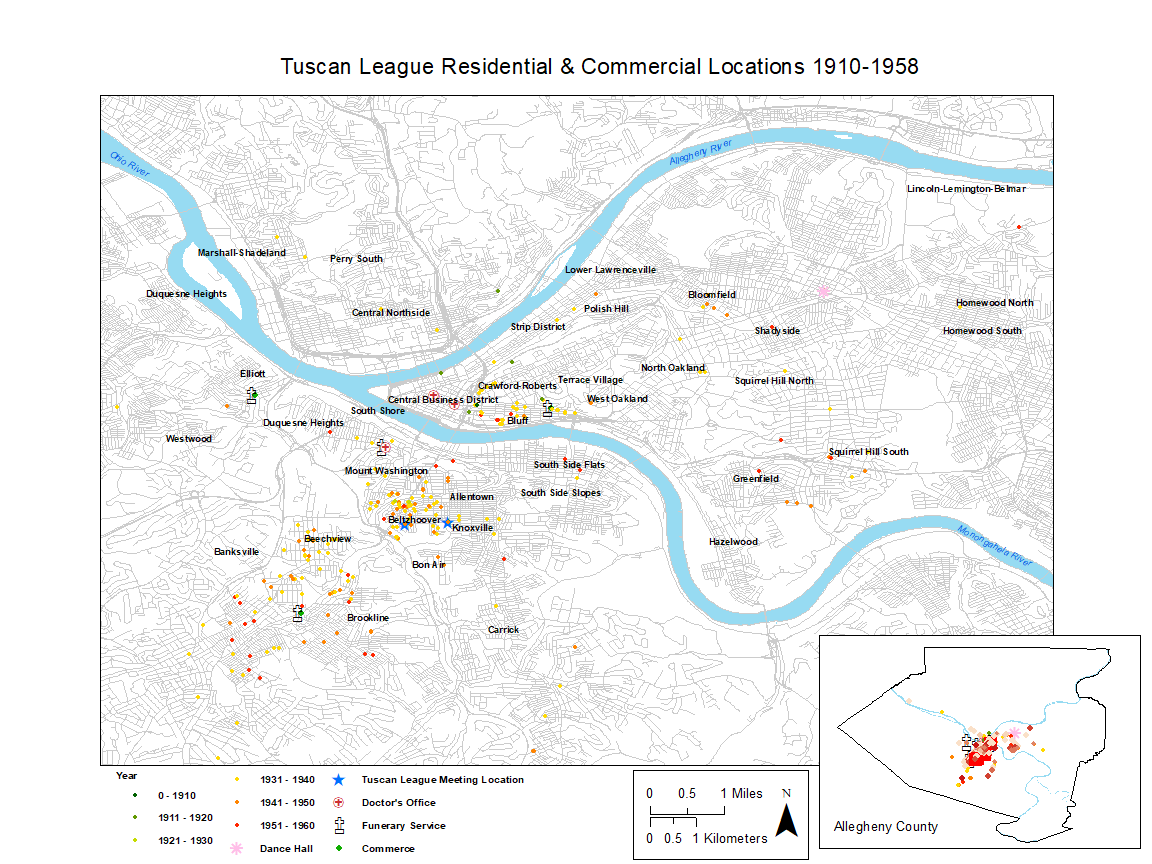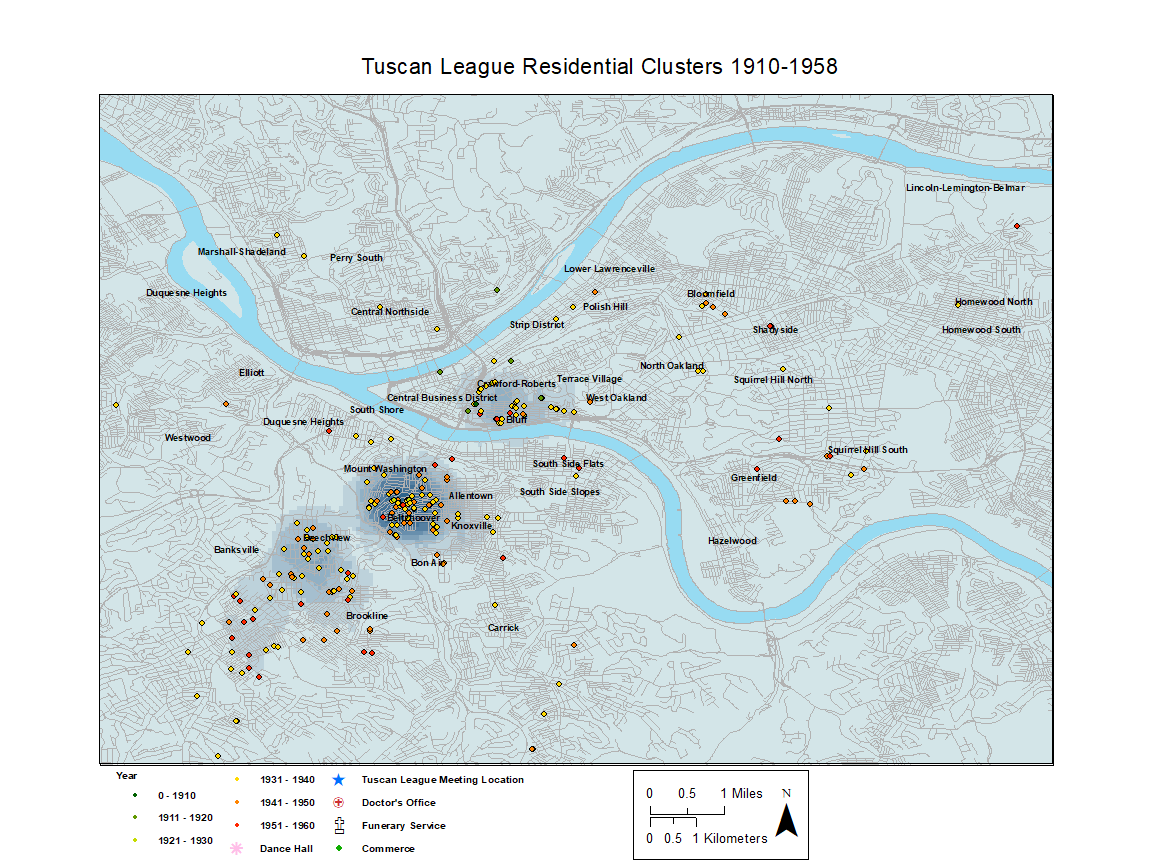Family Biographies

Members of the Tuscan League were all Itlian immagrants who, perhaps
suprisingly, had a healthy range in professional careers, political affiliations,
and immigration histories. Ranging from architects to fruit vendors, with butchers,
printers and painters in between, it is clear that the need for a supportive
community and a type of insurance was present among many Tuscan immigrants
regardless of financial situation. There were members who had been in the United
States for over two decades, like Stefano Maffei and Muzio Frediani, and others who
emigrated from Italy in the 1910’s and 1920’s. This indicates that the need for a
community of culturally-alike people exists in naturalized citizens as much as it
did for aliens.
The Unione, the Italian language publication of the Frediani Printing
Co., helped to prepare Italian immigrants for citizenship tests and was often a
vessel by which immigrants could assimilate to life in Pittsburgh.
As stated before, there was a wide range of political views among members of the Tuscan League. The Frediani Printing Co. was influential in local and state-wide elections because it provided many resources and different kinds of support to the Republican party as a direct result of Victor Frediani's political involvement. Romeo Maffei, a first-generation Italian American and the son of Stefano Maffei, was a leader of the Young Democrats of Pittsburgh and often represented a large community of Italian democrats. The sons of two of the most influential members of the League held important roles in the politics of Pittsburgh and yet, their families worked together very often to execute League's events. It is clear that the Tuscan League, in their acceptance of new members, was mostly only concerned that the new member was healthy and Tuscan, which allowed them to build a community that was representative of the larger Pittsburgh Italian immigrant community.
Please read below on biographical information on each of the prominent families of the Tuscan League.
Lega Families
Frediani
Maffei
Pasquinelli
Pellegrini
Zini
The Frediani Family
Muzio Frediani immigrated to the United States from Livorno (Leghorn), Italy in 1903 when he was eighteen years old. He was apprenticing to be a printer, which he began doing at age twelve. In Pittsburgh, he founded the Frediani Printing Co. which published the Unione, an Italian-American publication that would be the official newspaper of the Italian Sons and Daughters. The Italian Sons and Daughters of America (ISDA) is an organization that formed in Pittsburgh, of which Frediani was a founding member, as a way for Italian immigrants to preserve their culture and language. Muzio met his first wife, Anna Frediani, in Italy. After her death, Muzio later remarried Ruffina Diana of Pittsburgh, another Italian immigrant. He resided on Webster Ave for the entirety of his time in Pittsburgh, in an immigrant community comprised of many Syrian and Palestinian immigrants. Anna and Muzio had six children. Victor, the eldest, became a printer just like his father. With his younger brothers, Lorenzo and Robert, he ran Frediani Printing Co. after Muzio passed away in 1961.
Frediani Printing Co. was originally located in the Lower Hill District, but
they moved to current Liberty Ave location in 1956 due to zoning changes.
The Unione was integral to Italian immigrant life. One of
its main goals was to help prepare immigrants for the American citizenship
test. During World War II, it was a mouthpiece for Italian Americans to
express their dedication to the United States, which was under scrupulation
due to Italy’s role in the war. They were often printing statements like
Next to God, our religion is America!
and We owe respect to
the country of our birth, but absolute loyalty to the land of our
adoption.
Frediani Printing Co. also provided many resources for the
Republican party of Pittsburgh as a result of Victor's position as a staunch
Republican in the early half of the 20th century.
Muzio was a very influential member of the Tuscan League. His involvement ranged from planning the countryside parties to keeping track of who wasn't giving money to the League. He served as President, Correspondence Secretary, Administrator and even as a printer for the organization. The minutes make it clear that he was one of the more organized presidents, placing a heavy importance on attendance and the maintenance of an energetic attitude about the Tuscan League.

